Guide to Buying Freeskates
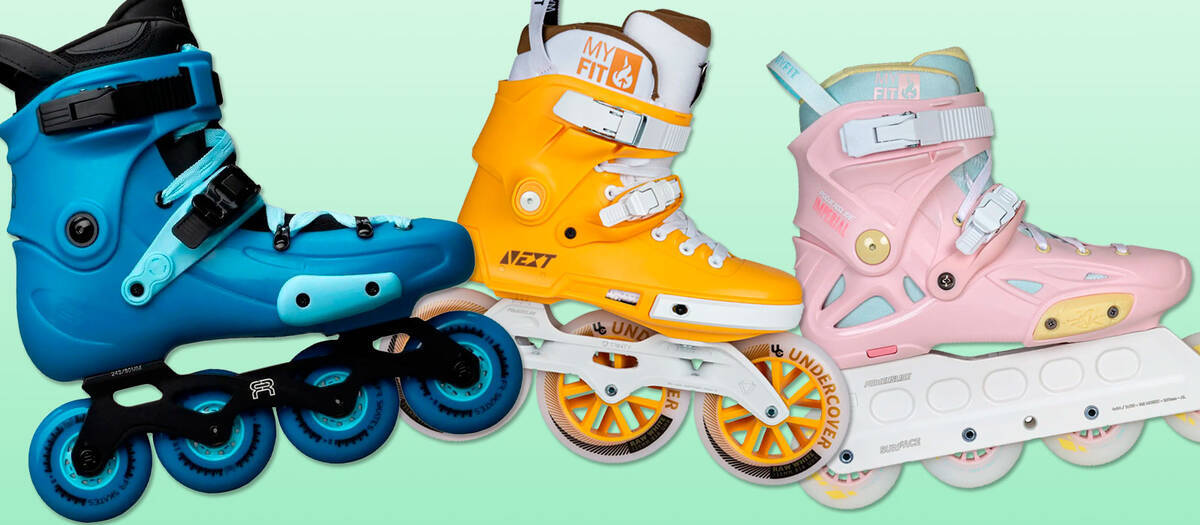
To determine the optimal freeskates for yourself, you need inline skates that align with your skating style and the terrains you skate on. This guide will take you through the essential elements of urban inline skating and freestyle skating, ensuring you select the perfect freeskates suited to your personal style and objectives.
Whether you're curious about urban inline skates or interested in the characteristics that make freestyle slalom skates nimbler, we hope any queries about freeskates are addressed in the sections below.
Overview
Best Inline Freeskates for Novices
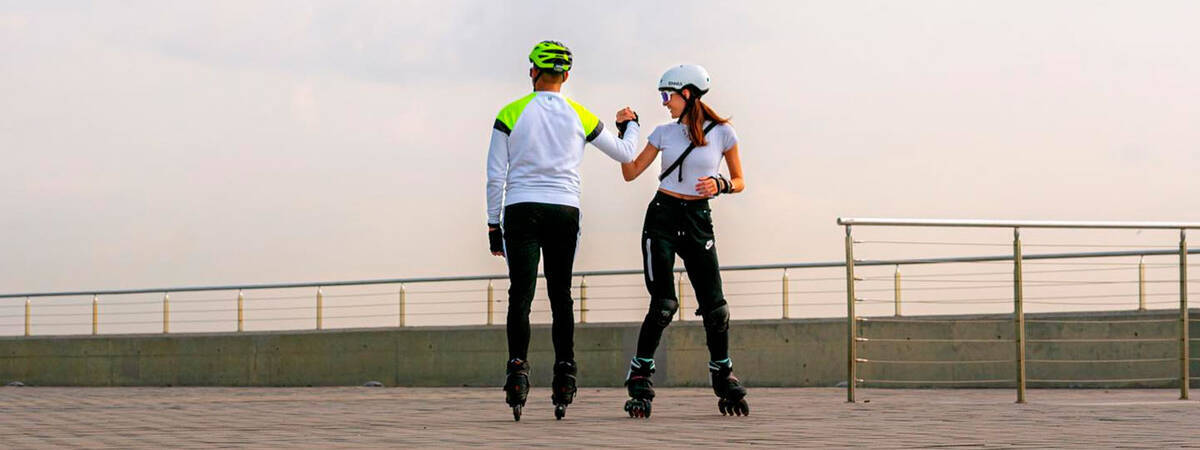
For those venturing into freeskating, opt for a pair of versatile freeskates, allowing you to explore various styles within the activity. As your skills develop, your selection will become more refined towards the particular style you wish to pursue. The guidance provided here is general and aimed at beginners interested in inline skating styles such as freeskating, freeriding, freestyle, and slalom.
When considering inline freeskates, ensure they possess these attributes:
- Comfortable liners: Look for high-quality liners with excellent padding and ventilation, crucial for long skating sessions. Materials that promote moisture-wicking and breathability will keep your feet cool and comfortable.
- Secure buckle system: A robust, adjustable buckle system offers a snug fit, maximising control and stability. A combination of buckles, laces, and straps allows for precise tweaking.
- Boots: For freeskating, a solid hard boot is advisable. These boots are durable, rigid, and resistant to impact, providing excellent ankle support, thereby aiding your stability. Furthermore, hard boots tend to deliver better responsiveness than soft boots.
- Ankle Support: Acquiring skates with proper ankle support is vital for preventing injuries and maintaining straight ankles during tricks.
- Wheel sizes: Ideally, choose wheels around 80 or 90 mm for added stability. Larger wheels elevate the centre of gravity, making skates harder to control.
- Wheel hardness: Softer wheels are generally easier for beginners, offering better grip on uneven surfaces and absorbing vibrations more effectively during skating.
Bear in mind these guidelines when browsing through our freeskates collection. You can also filter products by skill level, so you're only viewing models recommended for your proficiency.
Understanding Urban Skating
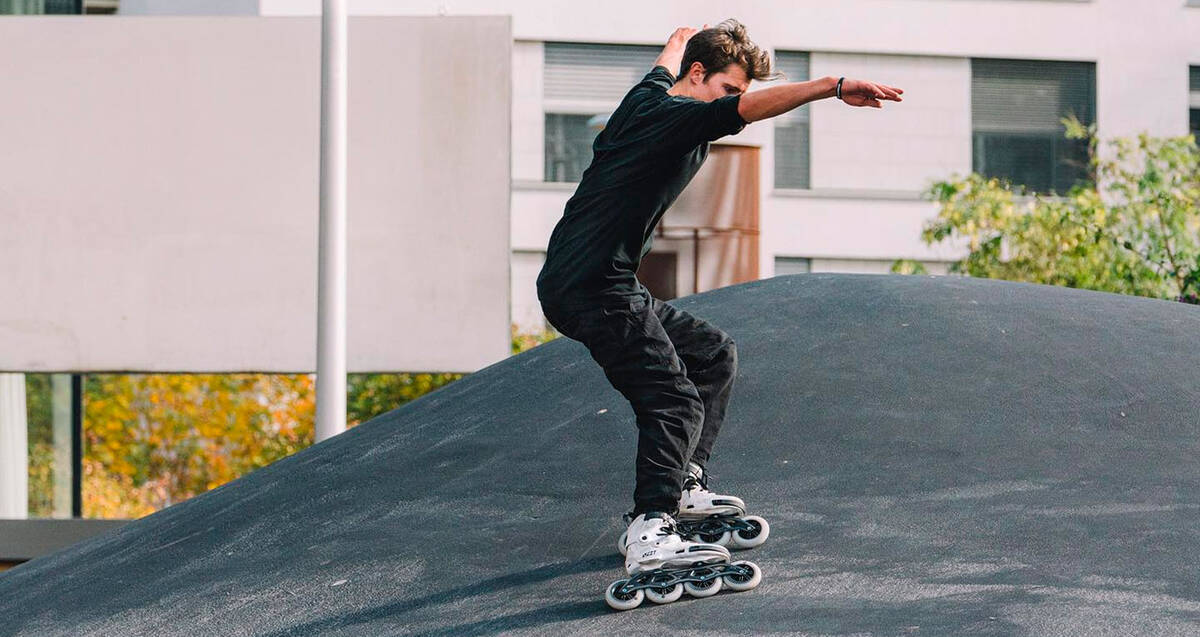
Urban skating, frequently termed street skating, involves moving through the city with speed and flair. It includes jumping obstacles, descending staircases, and gliding seamlessly through urban environments. Although there are shared elements with aggressive skating, like tackling stairs and riding walls, it excludes grinding. Urban freeskates aren't designed for tricks involving rails but are perfect for dynamic, high-energy skating.
Top Urban Inline Skates
Urban skating requires a hard boot for strength and a durable frame to absorb impacts. Given the long durations you may wear these skates, comfort is crucial. Opt for skates featuring well-padded liners, which provide both comfort and support.
Best Wheels for Urban Skating
Wheels on urban skates are crafted for speed and agility, typically ranging from 80 mm to 110 mm in diameter. For longer urban skating distances, larger wheels will aid in maintaining speed and momentum, while smaller wheels offer enhanced control. When performing tricks, you might find greater comfort with 100 mm wheels rather than 110 mm ones.
The hardness of wheels on urban skates varies between 82A to 88A. For skating on rough, uneven surfaces, softer wheels are beneficial as they absorb more vibrations.
Discover more about wheels for inline skating in the following:
Exploring Freestyle Skating

Freestyle skating focuses on precision and technical prowess, encompassing spins, jumps, and slides. Predominantly practiced on flat surfaces, it often involves moving through lines of cones in intricate patterns.
Flow in Freestyle Skating
Flow embodies the ability to seamlessly transition between moves while retaining control and balance in freestyle skating. The sport often resembles figure skating, with adept freeskaters appearing almost to hover above the ground.
Understanding Slalom Skating
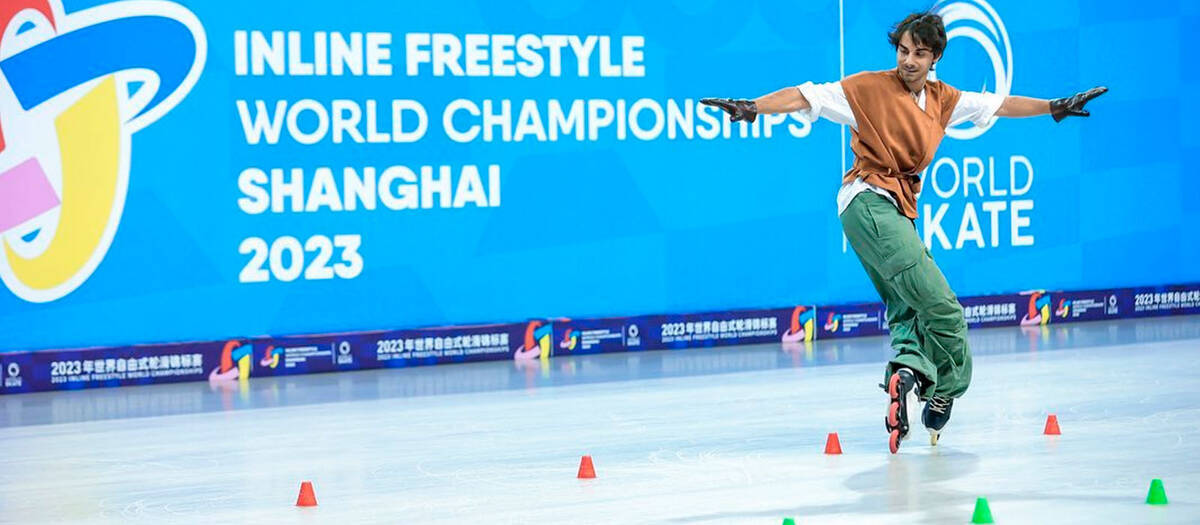
Slalom skating emphasises weaving through cones at speed with accuracy. It demands agility, balance, and excellent foot control. Typically, slalom skates are fitted with smaller wheels and a shorter frame to improve manoeuvrability.
Recommended Slalom Skates
A shorter frame and smaller wheels are essential for slalom skates to boost agility.
Seasoned slalom skaters often prefer a rockered wheel setup, with the two central wheels larger than the front and rear ones. This configuration enhances manoeuvrability and aids in executing tricks. However, rockered setups can be challenging for beginners, complicating the learning of basic techniques.
If you're a beginner, most freeskates can serve as slalom skates. As you hone your skills, you'll start to explore features that increase precision and control. Adopting a rockered wheelbase significantly elevates your flow in slalom skating. Another crucial aspect is the liner – advanced skaters frequently opt for built-in liners for heightened precision and responsiveness.
Comparing Urban and Freestyle Skating
Urban skating and freestyle skating have many commonalities, and they need not be strictly separated.
Urban skating is about navigating urban obstacles and varied terrains. In pursuing urban skating, you're likely to find yourself leaping, rolling down stairs, or navigating through tight spaces. It blends elements from both fitness skating and aggressive skating.
In contrast, freestyle skating is characterised by grace and accuracy. It's akin to dancing on wheels, focusing on fluid, elegant movements. Freestyle skating is at times almost synonymous with slalom skating.
While there are overlaps between these styles, urban skating focuses on traversing cities, creatively using architectural features, whereas freestyle is performed on flat, smooth surfaces. Urban skating involves weaving through traffic, while in freestyle, you weave through cones.
Are you inclined towards the fast-paced, rougher aspect of urban skating, or do the artistic aspects of freestyle skating appeal more to you? Considering these aspects will guide your choices regarding future enhancements to your freeskate setup.
Choosing Between 3-Wheeled and 4-Wheeled Freeskates
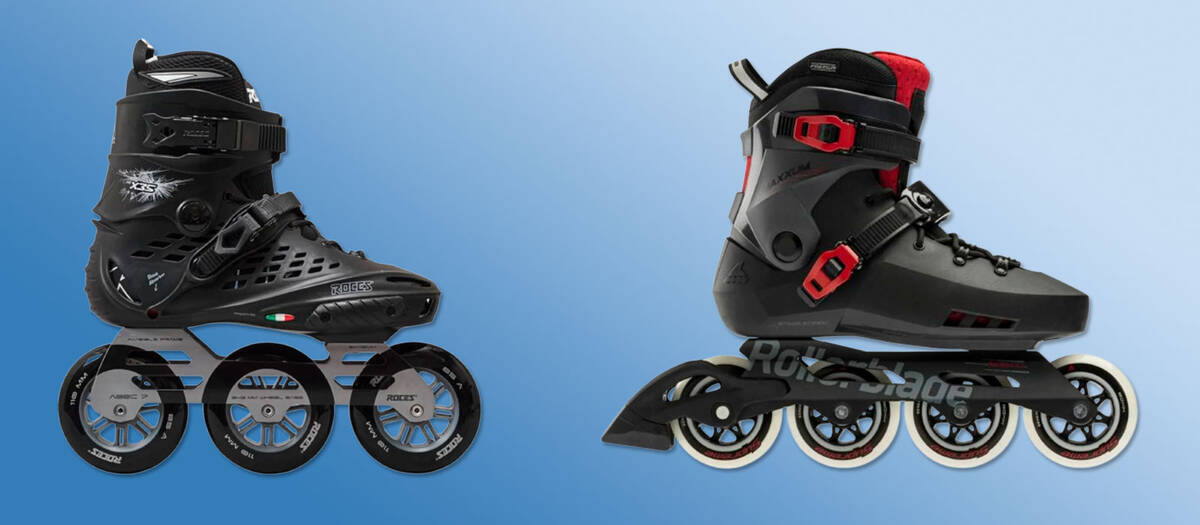
Here's a comparison to help you decide between 3-wheeled and four-wheeled inline skates:
- Four wheels recommended for beginners: With better stability, four-wheeled skates are ideal for beginners embarking on inline skates.
- Benefits of triskates: Three-wheeled skates offer notable advantages for seasoned skaters. They have a shorter wheelbase, improving manoeuvrability and making tight turns and executing tricks simpler. They're also capable of accommodating larger wheels, advantageous for covering distances.
- Wheel size: Triskates can incorporate larger wheels without extending the skate's length, contributing to faster speeds while maintaining good agility. This benefit is particularly useful for experienced skaters seeking performance enhancements.
Choosing between 3-wheeled or 4-wheeled skates is about personal style and preferences, rather than right or wrong decisions.
Is a Rockered Wheel Setup Ideal for Freeskating?
A rockered wheel setup can greatly benefit experienced freestyle skaters. This arrangement features slightly smaller front and rear wheels compared to the middle ones, creating a curved wheelbase that boosts manoeuvrability.
However, beginners may perceive rockered setups as unstable and harder to manage, complicating the learning of fundamental techniques. For those just starting, a flat wheel setup offers greater stability and ease of use, enabling confidence building before transitioning to a rockered setup.
Observing different skate models, you'll notice some are ‘rockerable,’ meaning you can adjust the front and rear wheels to a raised position, enhancing agility. A rockered setup can also be achieved by rotating wheels in a way that causes outer wheels to wear down quicker than centre wheels.
Maintaining Your New Freeskates
To ensure your freeskates continue to perform optimally, several considerations are necessary. After some time skating, you'll need to rotate the wheels within the frames and flip them to ensure even wear on both sides. Most skaters develop their own preferences and methods for wheel rotation, but you should consult our guide if you're unsure how to proceed.
We also provide guides on cleaning and lubricating your bearings, as well as the general maintenance of inline skates, including washing them and preventing unpleasant odours from the liners.
Freeskate Sizing Guide
For a seamless and comfortable freeskating experience, consider these tips for selecting the right size:
- Consult the size guide: Refer to the size chart on each product page for an accurate fit.
- Match your shoe size: Opt for a size comparable to your regular shoe size for maximum comfort.
- Choose a snug fit: A tight, snug fit provides better control and stability while skating.
The Necessity of Skate Protection
Using certified protective equipment is strongly advised for optimal safety and durability. At SkatePro, our protective gear meets EN 1078 standards and undergoes rigorous testing by experienced skaters. Quality protection not only ensures your safety but also enhances your confidence to learn new tricks and master technical skills rapidly, as you feel more secure when pushing your boundaries.
